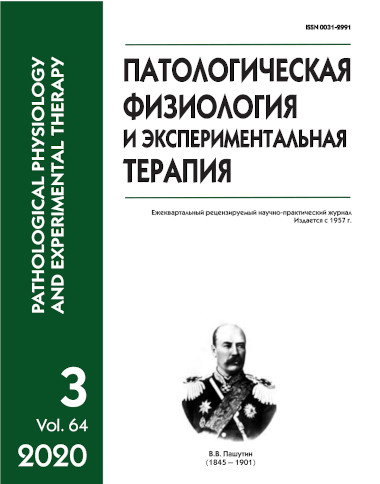Changes in parameters of systemic hemodynamics associated with hypercalcemia in combined and isolated administration of cobalt and Z
Abstract
Calcium belongs to essential macronutrients. In the human body, calcium exists in three forms: bound to proteins, primarily to albumin; as a complex with bicarbonate, lactate, phosphate, or citrate; and as an ionized form of Ca2+ (which accounts for 50% of circulating Ca). Zinc is one of the most important trace elements of the body and an integral part of metalloenzymes, such as carbonic anhydrase, carboxypeptidase, and DNA polymerase. Cobalt belongs to the metals with which calcium interacts in metalactive enzyme systems. Cobalt is able to deposit in the lysosomal matrix by complexation with anionic groups and to compete with Ca2+ and Mg2+ for binding to active centers of the proton pump. The aim of this work was to study changes in parameters of the systemic hemodynamics during hypercalcemia in combined and isolated administration of heavy metal salts of cobalt and zinc. Methods. Experimental hypercalcemia was induced in Wistar rats by intragastrical administration of a water-soluble vitamin D-3 drug Aquadetrim (3,000 IU, daily for one month). Cobalt chloride (4 mg/kg) and zinc chloride (20 mg/kg) were administered intragastrically with a probe, daily for one month. Upon completion of the experiment, the following major indexes of the systemic hemodynamics were determined: blood pressure was measured invasively, with a catheter inserted into the femoral artery, and minute blood volume was recorded using the thermodilution method, with a thermistor introduced into the aortic arch through the left common carotid artery. Mean blood pressure, cardiac index, stroke index, and specific peripheral vascular resistance were calculated using special formulas. Results showed that the monthly intragastric administration of cobalt chloride and zinc chloride was associated with hypokinetic type hypertension. Experimental hypercalcemia provided some protection against cobalt intoxication but the combined administration of the metals during hypercalcemia enhanced their toxicity. The combined administration of cobalt and zinc chloride produced a less pronounced effect on indexes of the systemic hemodynamics than each metal alone. Conclusion. Excessive intake of cobalt chloride and zinc chloride results in arterial hypertension. Hypercalcemia may change the toxic effects of heavy metals. The combined administration of cobalt with zinc produced a less pronounced effect on parameters of the systemic hemodynamics.






